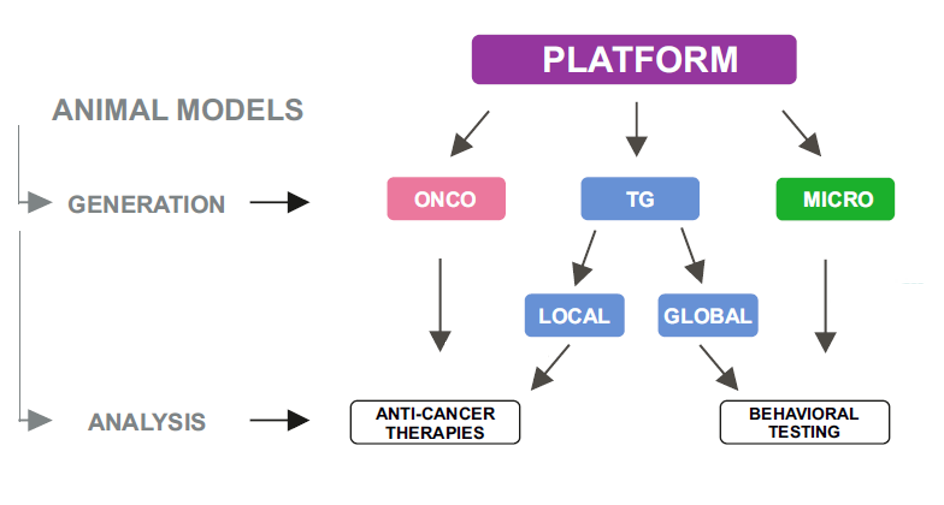Our current cognitive projects:
microRNAs in synaptic plasticity
The aim of the project is to define a role of microRNAs in synaptic plasticity in neurons involved in the formation of the memory trace. We are looking for microRNAs involved in the regulation of the PI3K-Akt-mTOR pathway e.g. miR-103/107. We have recently shown that loss of all microRNAs enhances memory formation in mice (Konopka et al., 2010). To study the PI3K-Akt-mTOR pathway we are using inducible, conditional Dicer and Pten genes knock-outs.
Role of CREB in spatial memory formation
The role of CREB/CREM/ATF pathway disruption in adult neurogenesis of the ICER II overexpressing rat model (Bieganska et al., 2012), generated in our laboratory. We are trying to demonstrate that disturbed neurogenesis may play a role in behavioral strategies of rats in the Morris Water Maze test and plays a role in pattern separation paradigm.
Role of TDP-43 protein in development of neurodegenerative diseases
The aim of the project is to determine an altered composition of synaptic proteins in the TDP-43 transgenic rat model that shows enhancement in memory processing (Koza et al., 2019). TDP-43, a multifunctional RNA processing protein has been recognized as a hallmark of a range of neurodegenerative disorders.
PML nuclear protein manipulation - overexpression and knock-out models
PML is known to be an important regulator of embryonic neurogenesis, however its role in the nervous system of adult mammals remains largely unknown. In our research we would like to elucidate the role of PML protein and PML nuclear bodies in the adult mouse brain. In our project we characterize the effect of PML gene overexpression and the effect of PML gene knock-out in selected regions of the hippocampus. In both cases, we use AAV vector to deliver PML into the hippocampus. The effects of overexpression or knock-out of PML are analyzed using the IntelliCage system.



